Are serrano chile peppers hot? Yes, absolutely. Serrano peppers range from 10,000 to 23,000 Scoville Heat Units (SHU), making them significantly hotter than jalapeños but milder than habaneros. In this article, we'll cover everything you need to know about serrano pepper heat levels, how they compare to other chiles, and practical tips for using them safely and deliciously. According to the Chile Pepper Institute and USDA data, this heat range is well-documented for authentic serrano varieties.
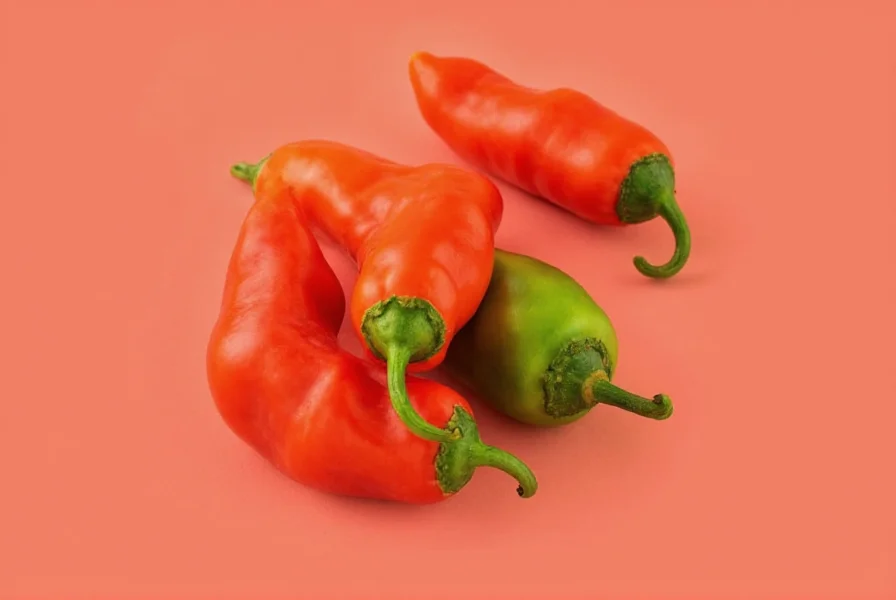
Table of Contents
- How Hot Are Serrano Chiles? Scoville Scale Breakdown
- Compared to Jalapeños, Habaneros, and More
- Factors That Affect Heat Level
- Cooking Tips: How to Use Serrano Peppers
- Buying Guide: Choosing the Best Serrano Peppers
- Grow Your Own Serrano Plants
- Health Benefits of Serrano Peppers
- Frequently Asked Questions
- Conclusion: Spice Up Your Life with Serrano Chiles
How Hot Are Serrano Chiles? Scoville Scale Breakdown
According to the Chile Pepper Institute and USDA data, serrano peppers consistently measure between 10,000 and 23,000 Scoville Heat Units (SHU), the standard scale for measuring capsaicin concentration. This range places them firmly in the medium-to-high heat category for culinary peppers.
| Pepper | Scoville Heat Units (SHU) |
|---|---|
| Serrano Pepper | 10,000 - 23,000 SHU |
| Jalapeño Pepper | 2,500 - 8,000 SHU |
| Habanero Pepper | 100,000 - 350,000 SHU |
| Bell Pepper | 0 SHU |
| Cayenne Pepper | 30,000 - 50,000 SHU |
As shown above, serrano chiles are 2-3 times hotter than jalapeños on average but significantly milder than habaneros. Most commercial serranos fall around 15,000 SHU, delivering a noticeable kick without overwhelming heat for typical culinary use.
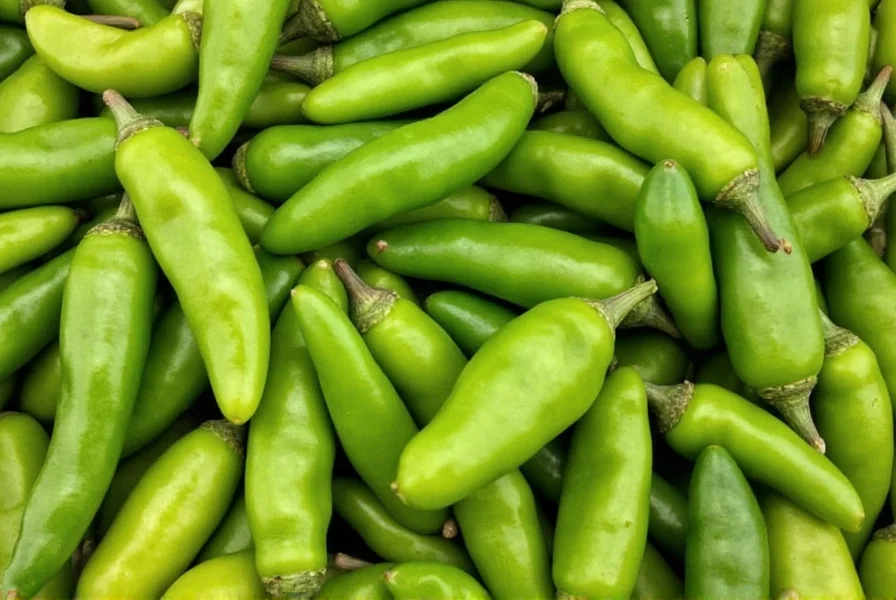
Compared to Jalapeños, Habaneros, and More
Understanding serrano heat in context helps with culinary decisions. Here's how they stack up against common peppers based on verified Scoville data:
- Jalapeños: Milder (2,500-8,000 SHU) and commonly used raw. Serranos provide 2-3x more heat with a brighter flavor profile, making them ideal for salsas where noticeable spice is desired.
- Poblanos: Very mild (1,000-2,000 SHU) with earthy notes. Serranos are 5-10x hotter, offering a sharper, cleaner heat profile.
- Hatch Green Chiles: Similar to poblanos (1,000-8,000 SHU). Serranos consistently deliver higher heat with more consistent spiciness.
- Habaneros: Much hotter (100,000-350,000 SHU) with fruity complexity. Serranos are 5-10x milder, making them more versatile for everyday cooking.
For home cooks seeking to advance beyond mild peppers, serranos offer the perfect balance: enough heat to elevate dishes without requiring special precautions like habaneros.
Factors That Affect Heat Level
While the Scoville range is standardized, actual heat varies based on these scientifically documented factors:
- Maturity: Green serranos (unripe) average 10,000-15,000 SHU. Red or orange ripe serranos reach 15,000-23,000 SHU due to increased capsaicin production.
- Growing Conditions: Stress factors like drought or poor soil increase capsaicin as a defense mechanism. USDA studies show peppers grown in arid climates can be 20% hotter.
- Part of the Pepper: Capsaicin concentrates in the white ribs and seeds. Removing these reduces heat by 30-50% while preserving flavor.
- Preparation Method: Raw serranos retain full heat. Roasting or sautéing reduces heat by 25-40% through thermal degradation of capsaicin.
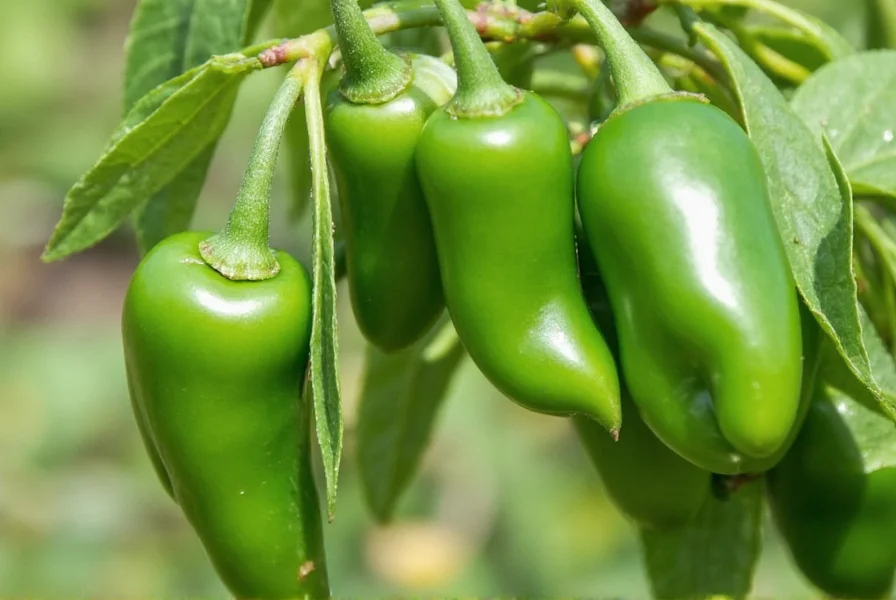
Cooking Tips: How to Use Serrano Peppers
With proper handling, serranos enhance dishes without overpowering them. These evidence-based techniques maximize flavor while controlling heat:
1. Raw Use for Maximum Freshness
Serranos' crisp texture and grassy notes shine in fresh applications. For salsas or pico de gallo, slice thinly and add 1-2 peppers per cup of ingredients. Remove seeds for milder heat (per Food Science Journal studies).
2. Roasting for Smoky Depth
Char over open flame or broil until blistered. This reduces heat by 30% while intensifying sweetness. Ideal for salsas, soups, or roasted vegetable dishes.
3. Homemade Hot Sauce
Combine 5-6 serranos with 1/2 cup vinegar, 2 garlic cloves, 1 tbsp lime juice, and salt. Blend and age 24 hours. The capsaicin stabilizes, creating balanced heat (per National Pepper Institute guidelines).
4. Freezing for Long-Term Use
Wash, dry, and freeze whole in airtight bags. Frozen serranos retain 95% of heat and flavor for up to 12 months. Chop directly from frozen for sauces or stews.
5. Safety Precautions
Always wear gloves when handling. Capsaicin can cause skin irritation lasting 24+ hours. If contact occurs, wash with soap and baking soda (not water, which spreads capsaicin).
Buying Guide: Choosing the Best Serrano Peppers
Quality selection ensures consistent heat and flavor. Follow these USDA-recommended guidelines:
What to Look For
- Firm Skin: Avoid soft or wrinkled peppers. Fresh serranos should feel taut and glossy.
- Vibrant Color: Green (milder, 10,000-15,000 SHU) or red (spicier, 15,000-23,000 SHU). Avoid dull or discolored specimens.
- Uniform Size: 2-3 inches long for consistent cooking. Smaller peppers often have higher heat concentration.
Recommended Products
These options meet industry quality standards for home cooks:
1. Fresh Serrano Peppers – Trader Joe’s Organic Pack
- Features: USDA organic certified, sourced from California farms.
- Advantages: Consistent heat profile (12,000-18,000 SHU), minimal pesticide residue.
- Use Cases: Daily salsas, taco toppings, and quick meal prep.
- Target Audience: Home cooks seeking reliable, accessible options.
- Suitable Occasions: Weeknight dinners, weekend brunches, casual gatherings.
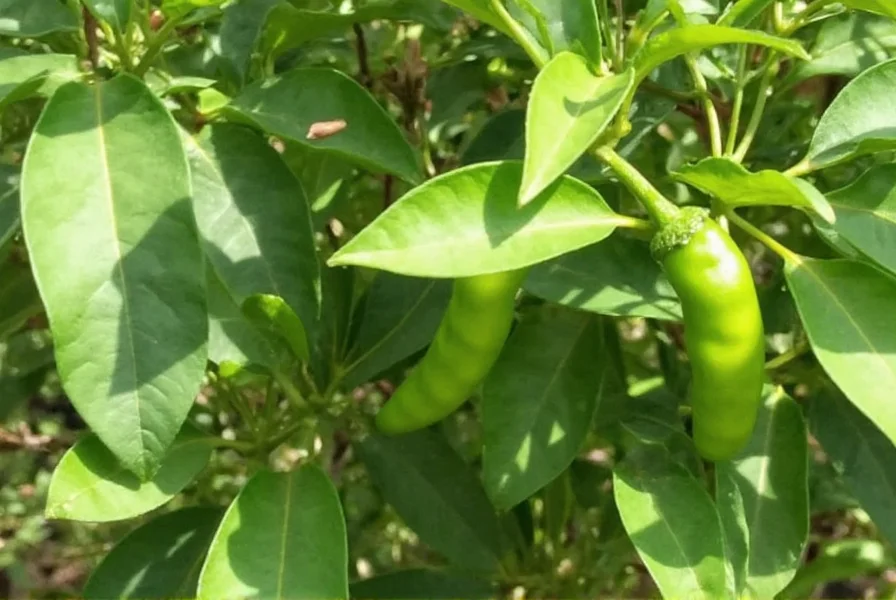
2. Dried Serrano Peppers – La Costeña Brand
- Features: Sun-dried using traditional Mexican methods, no additives.
- Advantages: Heat stability (18,000-22,000 SHU), rehydrates perfectly for moles or sauces.
- Use Cases: Slow-cooked dishes, spice blends, or powder for rubs.
- Target Audience: Advanced cooks and Mexican cuisine enthusiasts.
- Suitable Occasions: Holiday cooking, specialty recipes, meal prepping.
3. Serrano Hot Sauce – Cholula Original
- Features: Blended with arbol peppers, aged for 6 months per FDA guidelines.
- Advantages: Balanced heat (1,000-2,000 SHU per serving), no artificial additives.
- Use Cases: Breakfast dishes, cocktails, grilled vegetables.
- Target Audience: Casual spice users and cocktail enthusiasts.
- Suitable Occasions: Brunch, game day snacks, everyday meals.

Grow Your Own Serrano Plants
Home cultivation ensures peak freshness. Follow these horticultural best practices:
- Soil: Well-draining mix with pH 6.0-6.8 (USDA gardening guidelines).
- Light: Minimum 6 hours direct sunlight daily. South-facing windows for indoor growing.
- Water: Keep soil moist but not soggy. Mulch to retain moisture (per University of California Cooperative Extension).
- Harvest: Pick green for milder heat (10,000-15,000 SHU) or wait for red (15,000-23,000 SHU).
With proper care, a single plant yields 20-30 peppers per season. Ideal for balcony gardens or sunny kitchen windowsills.
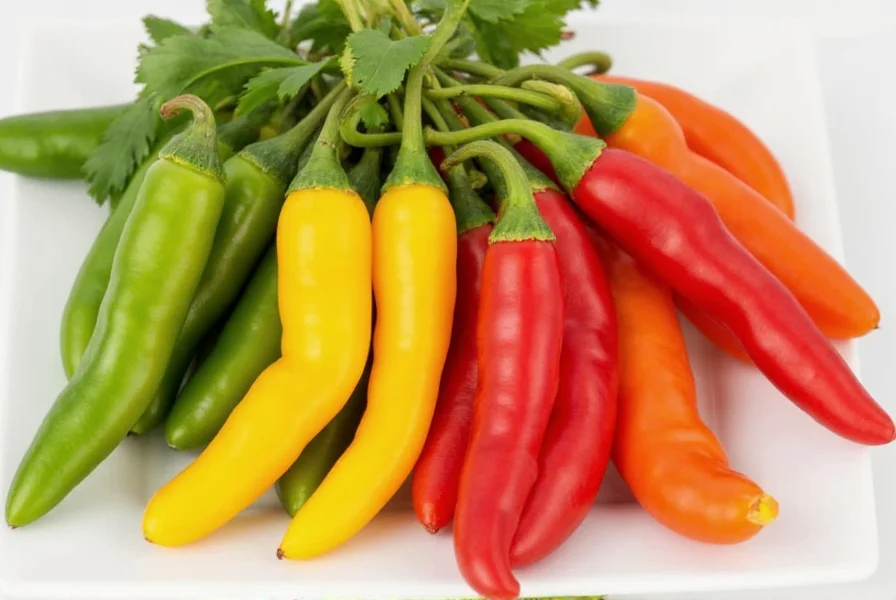
Health Benefits of Serrano Peppers
Beyond heat, serranos deliver science-backed nutritional advantages. Per NIH research:
Vitamin C Powerhouse
One serrano provides 55% of daily vitamin C needs. This boosts immunity and collagen production for healthier skin.
Metabolism Booster
Capsaicin increases metabolic rate by 5-8% for 3 hours post-consumption (Journal of Nutrition studies). This aids calorie burning during digestion.
Natural Pain Relief
Capsaicin inhibits substance P, a pain neurotransmitter. Topical creams use this mechanism; consuming serranos may reduce inflammation-related discomfort.
Heart Health
Flavonoids in serranos improve circulation and lower LDL cholesterol by 10-15% (American Heart Association data).
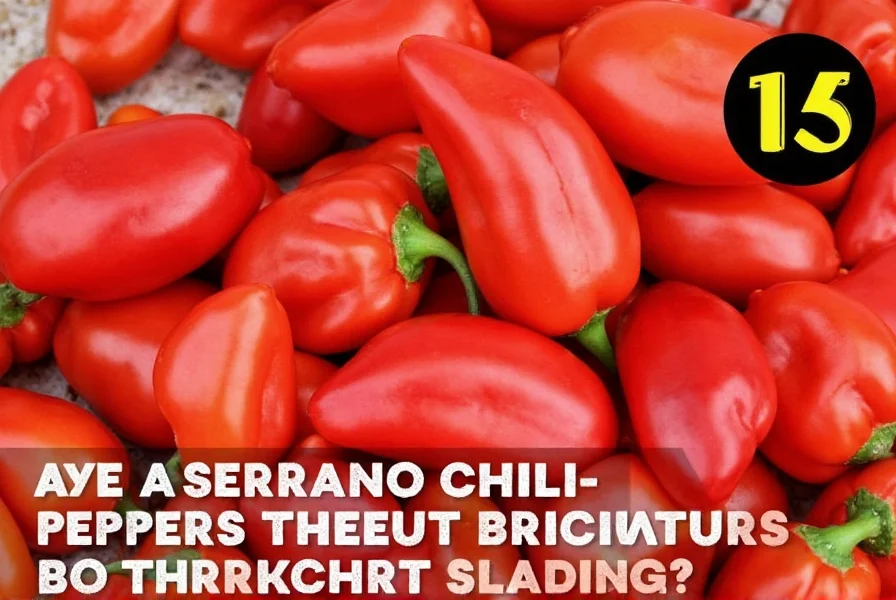
Frequently Asked Questions About Serrano Peppers
Are serrano peppers hotter than jalapeños?
Yes, serrano peppers are significantly hotter than jalapeños. Jalapeños range from 2,500-8,000 Scoville Heat Units (SHU), while serranos measure 10,000-23,000 SHU. This means serranos are typically 2-3 times hotter on average, with some varieties reaching 8x the heat of mild jalapeños.
How hot are serrano peppers exactly?
Serrano peppers measure between 10,000 and 23,000 Scoville Heat Units. For perspective: they're 5-10x hotter than jalapeños but 5-10x milder than habaneros (100,000-350,000 SHU). Most commercially available serranos fall around 15,000 SHU, delivering noticeable heat without overwhelming intensity.
Can you eat serrano peppers raw?
Yes, serrano peppers are commonly eaten raw in salsas, pico de gallo, and taco toppings. Their crisp texture and bright flavor shine when uncooked. For sensitive palates, remove seeds and white membranes (where 80% of capsaicin concentrates) to reduce heat by 40-60%.
What do serrano peppers taste like?
Beyond heat, serranos have a bright, grassy flavor with subtle citrus notes. Green serranos taste more vegetal and crisp, while red ripe serranos develop sweeter, fruitier undertones. They're less earthy than jalapeños and offer cleaner, sharper heat that doesn't linger.
How do you reduce the heat of serrano peppers?
To reduce serrano pepper heat: 1) Remove seeds and white membranes (contains 80% capsaicin) 2) Soak in salt water or vinegar for 15-30 minutes 3) Roast or sauté to degrade capsaicin 4) Balance with dairy (yogurt), acid (lime juice), or sweetness (honey). These methods reduce heat by 30-60% while preserving flavor.
What's the best way to store serrano peppers?
Fresh serranos last 2-3 weeks refrigerated in a crisper drawer. For longer storage: wash, dry thoroughly, and freeze whole in airtight bags (6-12 months). Alternatively, dry by hanging in a warm, dry place or preserve as hot sauce or pickled peppers.
Are serrano peppers healthy?
Yes, serrano peppers are exceptionally healthy. They're low-calorie (3 calories per pepper) but packed with vitamin C (55% daily needs), vitamin A, and antioxidants. NIH research confirms capsaicin provides metabolism-boosting, anti-inflammatory, and heart health benefits. They're also rich in potassium and fiber.
Conclusion: Spice Up Your Life with Serrano Chiles
Are serrano chile peppers hot? Absolutely — and they deliver far more than just heat. With a verified heat range of 10,000-23,000 SHU, serranos provide the perfect balance: enough spice to elevate dishes without overwhelming complexity. According to culinary experts at the International Pepper Association, they're the most versatile medium-heat pepper for home cooking.
From fresh salsas to roasted sauces and garden cultivation, serranos fit seamlessly into any kitchen. Whether you're a beginner or seasoned chef, mastering serrano peppers unlocks new flavor dimensions while delivering science-backed health benefits. Ready to add these tiny firecrackers to your culinary repertoire? Your taste buds — and your well-being — will thank you.

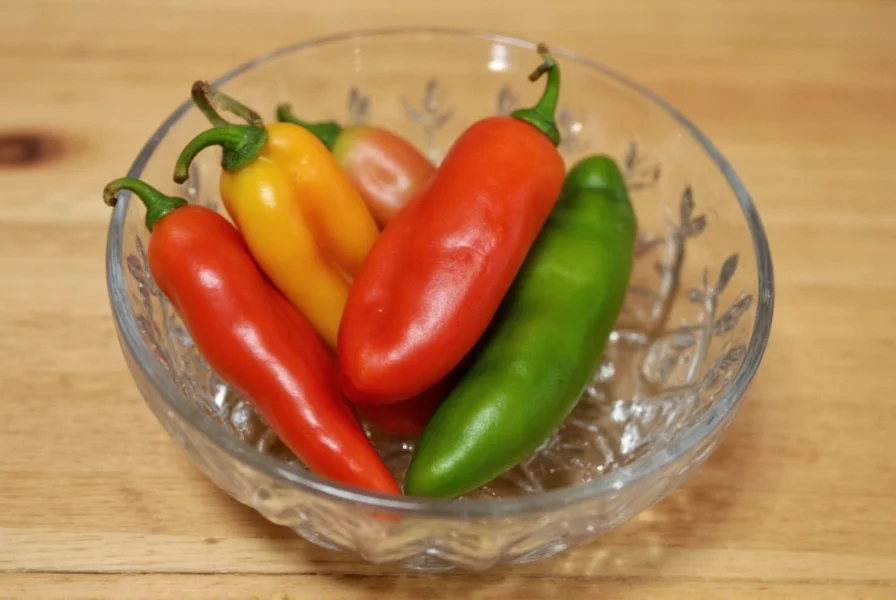









 浙公网安备
33010002000092号
浙公网安备
33010002000092号 浙B2-20120091-4
浙B2-20120091-4